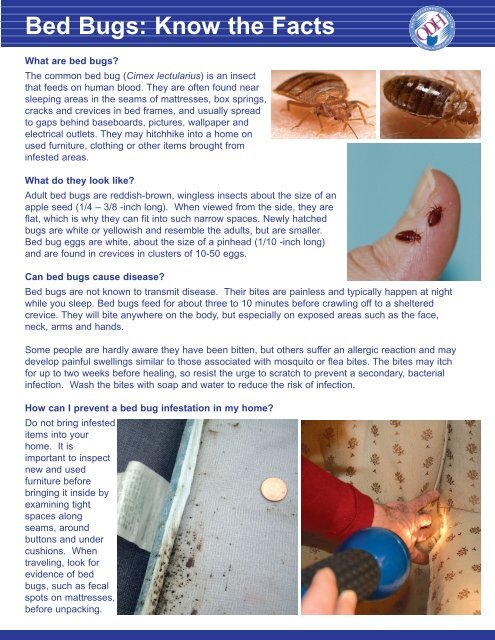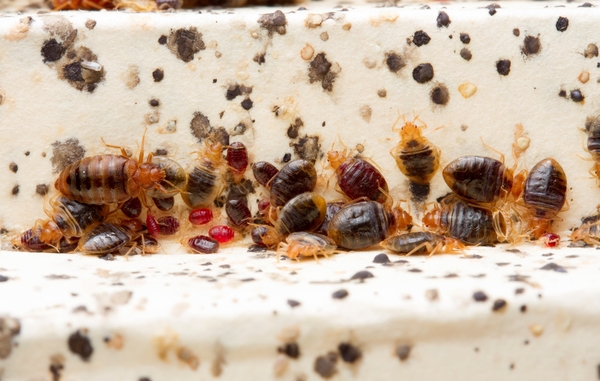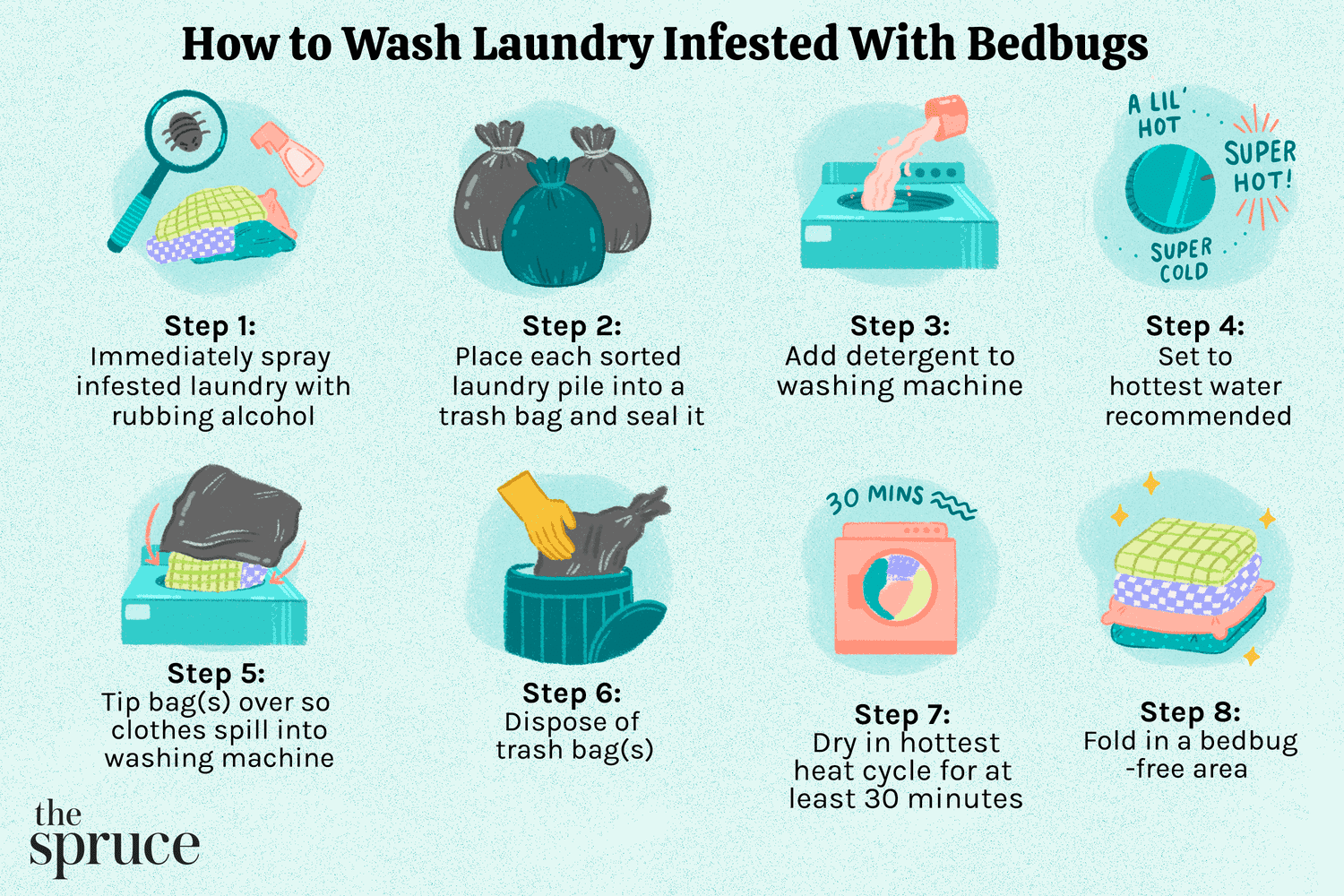To prevent bed bugs after exposure, immediately wash and dry your clothes on the highest heat settings. Seal affected items in plastic bags until you can clean them properly.
Bed bug infestations can turn into a homeowner’s nightmare if not tackled swiftly and effectively. Regular inspection of your sleeping areas and furniture is crucial for early detection. Ensuring your personal items, like luggage, are cleaned after returning from travel reduces the risk of bringing these pests home.
Implementing protective measures such as mattress covers and reducing clutter deprives bed bugs of hiding spots. Promptly address any sign of bed bugs to prevent them from establishing themselves, keeping your living space safe and comfortable. Remember, proactive steps and immediate action are your best defense against these invasive insects.
Introduction To Bed Bugs And The Risks Of Exposure
Introduction to Bed Bugs and the Risks of Exposure
Imagine a tiny, elusive pest capable of turning your peaceful sleep into a nightly battle. Bed bugs are expert hitchhikers and stealthy invaders, renowned for their ability to spread rapidly. Exposure to these pests is not just a nuisance; it poses risks such as skin irritations and allergic reactions. Understanding these insects and the common ways we come into contact with them is the first step towards prevention and maintaining a bug-free home.
Characteristics Of Bed Bugs
- Small in size: Adults are roughly the size of an apple seed.
- Reddish-brown: Their color can vary, typically turning redder after feeding.
- Nocturnal: Most active at night, which allows them to bite undetected.
- Feed on blood: Humans are their preferred hosts for feeding.
- Resilient: Can survive months without a meal and withstand various temperatures.
How Exposure Occurs
Bed bug exposure often happens in places with high turnover rates of individuals. These can include hotels, hostels, and public transportation. Bringing them home might occur through:
- Contact with infested furniture or clothing
- Sharing personal items with someone dealing with an infestation
- Visiting or staying overnight in a contaminated environment
Regular vigilance and preventive measures are crucial in avoiding the unwelcome company of bed bugs. The following sections will guide you through actionable steps to ensure your exposure doesn’t turn into an infestation.
Early Detection Strategies
Staying one step ahead of bed bugs calls for a keen eye and proactive measures. Early detection is paramount in preventing an infestation. Here are the best strategies to spot bed bugs early and keep your home safe.
Signs Of Bed Bug Presence
Recognizing the hints of a bed bug infestation is the first line of defense. Look for these tell-tale signs:
- Reddish-brown spots on bedding or upholstery, which can be droppings or crushed bugs.
- Tiny, white eggs or eggshells hidden in crevices or seams of mattresses and furniture.
- Live bed bugs, often in the nooks of beds, couches, and other dark, quiet places.
- Skin sheds, as they molt and grow through their life stages.
- A musty odor, often compared to overripe raspberries or coriander.
Diy Monitoring Techniques For Bed Bugs
Safeguard your space with these homemade monitoring tips:
- Check regularly, especially in sleeping areas, for the signs mentioned above.
- Use double-sided tape around the legs of beds and furniture to catch crawling insects.
- Place bed bug interceptors under furniture legs; these traps can capture bed bugs attempting to climb up.
- Create a DIY trap with a container, dry ice, and talcum powder to attract and trap them.
- Inspect second-hand furniture, luggage, and clothing thoroughly before bringing them into your home.
Regular cleaning and vacuuming of potential hiding spots also go a long way. Staying vigilant ensures early discovery, cutting the chances of a full-blown infestation.
Sanitation And Cleaning Methods
Let’s dive right into the science of cleanliness and how it relates to keeping bed bugs at bay. Preventing these unwelcome guests means more than just a quick tidy-up. It takes a deep dive into sanitation and cleaning methods that leave no room for bed bugs to survive.
Proper Bedding Care
Wash and dry all bedding on the highest heat setting to kill bed bugs. Use bed bug-proof encasements for mattresses and pillows. This keeps bugs out and makes inspections easier. Regularly check seams and edges for signs of infestation.
Using lists to describe the steps for proper bedding care- Strip your bed of all linens, including sheets, blankets, and pillowcases.
- Wash everything in hot water, ideally above 120°F (49°C).
- Use a high-heat dryer setting for at least 30 minutes.
- Vacuum the mattress, bed frame, and surrounding floor thoroughly.
- Seal your mattress and box springs with protective covers.
Decluttering For Better Inspection
Reduce clutter to remove bed bug hiding spots. Increased visibility eases inspection. Keep belongings in sealed containers and elevate them off the floor. This limits bed bug access and makes regular checking straightforward.
Table to present tips for decluttering to prevent bed bugs| Area | Action | Benefits |
|---|---|---|
| Floors | Keep clear of laundry and loose items | Fewer hiding spots for bed bugs |
| Shelves | Store items in sealed bins | Easier to inspect and clean |
| Closets | Minimize storage, especially near the bed | Reduces bed bug migration |
Regular cleaning and careful observation are vital. Enact these sanitation and cleaning tips to create a bed bug-resistant environment keeping these pests from calling your home theirs.
:max_bytes(150000):strip_icc()/Bed-bug-control-tips-and-tricks-2656377-e580f433c55a4a98826e429753062084.jpg)
Credit: www.thespruce.com
Physical Barriers To Prevent Bed Bug Infestation
Physical barriers play a crucial role in preventing a dreaded bed bug infestation. The right strategies can mean the difference between a peaceful sleep and a persistent problem. Let’s explore how to shield your space from these tiny invaders.
Using Protective Mattress Covers
Bed bugs love mattresses, but a protective cover can stop them. Not any cover will do; it must be bed bug-proof. Look for covers that fully encase your mattress and box spring. Zip them up tight to trap any bed bugs inside and prevent new ones from coming in. These covers should be strong, with no holes or tears.
Sealing Cracks And Crevices
Hidden spaces in our homes can become bed bug highways. Seal them up to restrict their movement. Check for cracks around baseboards, window frames, and electrical outlets. Use a sealant, like caulk, to fill these gaps. It’s a simple yet effective step towards a bed bug-free home.
| Barrier Method | Benefits |
|---|---|
| Protective Covers | Encases mattress, traps bed bugs |
| Sealant | Fills cracks, stops entry |
- Regularly check your barriers for any signs of damage
- Replace worn out covers immediately
- Ensure sealant remains intact over time
Chemical Treatments: Safe And Effective Use
Bed bugs can turn a restful night into a nightmare. Once you’ve been exposed, it’s crucial to act quickly to prevent an infestation. Chemical treatments offer a powerful weapon against bed bugs. To use these treatments safely and effectively requires knowledge of the options and best practices. This guide offers expert tips on the right use of insecticides to keep your home bed bug-free.
Understanding Insecticide Options
When To Call Professionals
Sometimes, an infestation requires professional help. Consider expert intervention in these cases:
- Widespread infestation: Professionals tackle all affected areas.
- Repeated infestations: Experts find and eliminate hidden bugs.
- Health concerns: They offer non-chemical treatment alternatives.
Professional exterminators have access to more potent tools and methods. They ensure the thorough elimination of bed bugs with minimum risk to your health and surroundings.
Heat And Cold Treatment Tactics
Heat and Cold Treatment Tactics stand as formidable weapons in the battle against bed bugs. These critters are tough, but they can’t stand extreme temperatures. To outsmart these pests, implementing heat and cold treatments can yield promising results. The following insights will guide you through leveraging high temperatures and harnessing freezing conditions effectively.
Leveraging High Temperatures
Bed bugs despise heat. In fact, temperatures above 120°F (49°C) can kill them within minutes. This makes heat treatment a powerful strategy. It’s vital to maintain high temperatures for a consistent period, as this ensures all bugs and eggs are eradicated.
- Wash bedding and clothes in hot water for 30 minutes.
- Use a steamer on mattresses, furniture, and cracks.
- Consider professional heat treatment for your entire home.
Using Freezing Conditions To Kill Bed Bugs
Cold treatments require persistence. Bed bugs have to be exposed to temperatures below 0°F (-18°C) for at least four days. This method can be less convenient but still effective.
| Action | Time | Notes |
|---|---|---|
| Place items in a freezer | 4+ days | Ensure freezer is at the right temperature. |
| Use DIY freezing techniques | Varies | Insulate items in plastic bags to trap cold. |
Both heat and cold treatments must be thorough to be effective. Bed bugs are tenacious; missing even a small area can lead to a resurgence. Consistency and thoroughness are your best tools for freedom from these pests.
Regular Maintenance To Sustain A Bed Bug-free Environment
Keeping your home free from bed bugs calls for dedication and regular effort. Regular maintenance is your best defense after exposure. It helps prevent these tiny pests from calling your house their home. Here, we’ll explore the crucial actions you need to take to maintain a bed bug-free environment.
Routine Cleaning Practices
Bed bugs are experts at hiding. Routine cleaning can reveal them. Your cleaning routine should include:
- Vacuuming: Cover all areas, especially near beds and furniture.
- Steam Cleaning: Heat can kill bed bugs. Use a steam cleaner on your mattress.
- Washing Fabrics: Use hot water for beddings, curtains, and clothes.
- Declutter: Fewer hiding spots mean fewer bed bugs. Keep clutter to a minimum.
Scheduled Professional Inspections
Sometimes, home efforts aren’t enough. Call professionals for monthly or quarterly inspections. They can:
| Spot Signs | Apply Treatments | Prevent Future Infestations |
|---|---|---|
| Experts see what we don’t. | They use safe, effective methods. | They offer long-term strategies. |
Remember, consistent effort stops bed bugs from coming back. Keep your home clean and engage professionals.
Traveling Smart To Avoid Bed Bug Exposure
Bed bugs are sneaky little pests that can turn a pleasant journey into a nightmare.
Frequent travelers face the risk of encountering bed bugs and inadvertently bringing them home. The following tips can shield you from these unwanted souvenirs and ensure a bug-free experience during and after your travels.
Precautions When Staying In Hotels
- Inspect the room before settling in. Check the mattress seams, headboard, and luggage racks for signs of bed bugs.
- Use metal luggage racks instead of storing your clothes in dressers or leaving luggage on the floor.
- Avoid placing items on the bed to reduce the risk of contamination.
- Seal your suitcase in a plastic bag to keep bugs out.
Handling Luggage And Clothing Post-travel
- Immediately wash clothes in hot water and dry on the highest heat setting.
- Vacuum your suitcase and dispose of the bag in an outdoor trash can.
- For non-washable items, use a steamer. Steam can kill any bugs or eggs hidden in your belongings.
- Store luggage away from bedrooms, such as in the garage or a sealed plastic container, to prevent any potential bed bugs from spreading into sleeping areas.
Education And Awareness: Your Best Defense
Education and awareness stand as the pillars in the fight against bed bug infestations. Arming yourself with knowledge not only helps prevent these pests but also promotes swift action when dealing with an exposure. In this crucial combat, understanding the enemy and preparing your household are non-negotiable steps towards safeguarding your environment.
Training Household Members
In your home, every member plays a vital role in preventing bed bugs. Training begins with recognizing these pests. A simple checklist for spotting bed bugs can include:
- Understanding the appearance of bed bugs at different stages
- Identifying common signs of infestation like bites, blood spots on bedding, or live insects
- Checking second-hand furniture or mattresses before bringing them home
Regular family meetings can ensure that everyone remains vigilant. Practice bed bug checks after traveling, and always keep living spaces clutter-free to reduce hiding spots for these pests.
Staying Informed About Bed Bug Trends
Bed bug patterns can change with seasons, locations, and even lifestyle trends. Stay updated through:
- Local health department updates
- News about outbreaks in hotels, schools, or public transportation
- Online resources offering the latest bed bug management strategies
Knowledge of bed bug hotspots and effective treatment options equips you to act without delay. Ensure this information reaches all household members.

Credit: www.yumpu.com
Conclusion: Maintaining Vigilance Against Bed Bugs
Winning the fight against bed bugs is all about staying alert. Constant vigilance is crucial, not just in the early days following exposure but as an ongoing commitment. Let’s explore effective strategies to keep these tenacious pests at bay for good.
Regular Re-evaluation Of Prevention Strategies
Bed bugs adapt quickly, and so should you. It’s essential to assess the methods you’re using:
- Inspect your home frequently for any signs of bed bugs.
- Make adjustments to strategies that may not be working as well.
- Stay informed about new bed bug prevention techniques.
Note changes in bed bug activity and adapt your plan accordingly.
The Importance Of Prompt Response To Potential Infestations
Time is not on your side when it comes to bed bugs. Taking immediate action can make a difference:
- Identify the signs of bed bugs, such as bites or droppings.
- Contact a professional exterminator without delay if you suspect an infestation.
- Implement isolation and extermination protocols rapidly to stop further spread.
Treating a small problem quickly is easier than battling a full-blown infestation.

Credit: content.ces.ncsu.edu
Frequently Asked Questions On How To Prevent Bed Bugs After Exposure?
Can Bed Bug Infestations Be Prevented?
Bed bug infestations can indeed be prevented with proactive measures. Regular inspections, encasing mattresses, and reducing clutter can significantly lower the risk. It’s also crucial to exercise caution when traveling or bringing second-hand furniture into your home to avoid unintentional introductions of these pests.
What Are The First Steps After Bed Bug Exposure?
Immediately after exposure, isolate any potentially infested items. Wash and dry clothing at high temperatures, and vacuum luggage or bags thoroughly. Monitor for signs of bed bugs and consider professional pest control services if necessary to prevent an infestation from taking root in your home.
How Often Should I Inspect For Bed Bugs?
Regular inspections for bed bugs are recommended every month, especially if you live in a high-risk area or if you frequently travel. Pay special attention to beds, furniture, and any cracks or crevices where bed bugs might hide. Early detection is key to preventing larger infestations.
Are There Any Natural Remedies To Deter Bed Bugs?
Natural remedies like essential oils, diatomaceous earth, and heat treatments can deter bed bugs to some extent. These methods can help when used as part of a comprehensive prevention strategy but are generally less effective as standalone treatments, especially in the case of a severe infestation.
Conclusion
Protecting your home from bed bugs requires vigilance and swift action. Adopt these strategies to decrease the risk of infestation and ensure peace of mind. Regular inspections and cleaning are your first line of defense. Remember, early detection simplifies elimination.
Stay proactive in bed bug prevention for a bug-free home.
Related posts:

I’m MD Tanvir, and I bring years of expertise gained from working closely with pest control companies to the forefront. My journey in the industry has inspired me to launch Bug Battler, a platform aimed at equipping people with the know-how to combat pests autonomously. Through Bug Battler, I aim to empower individuals with practical insights to tackle pest infestations effectively.

